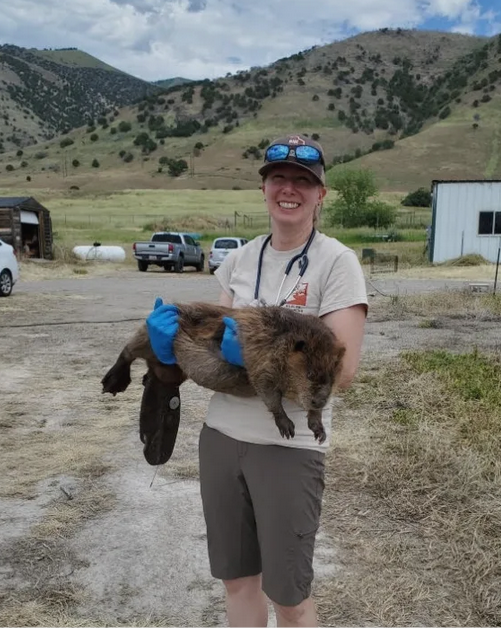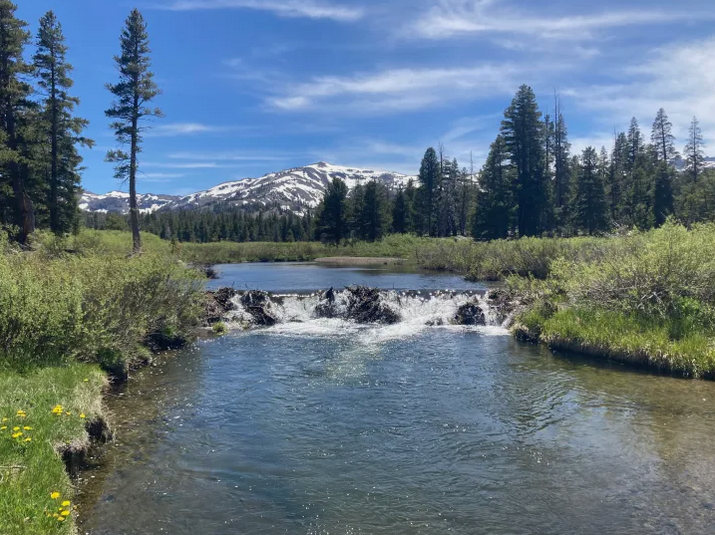Maven’s notebook is a website that has been fairly excited about beavers for a while. But now they really have something to celebrate.
As evidence for the wide-ranging environmental benefits of beavers has mounted, champions of these 40-to-70-pound rodents have increasingly clamored for restoring them in California. Now, the state has finally joined others, including Oregon, Washington and Utah, that are putting these furry ecosystem engineers to work. This year marks the launch of a $1.44 million per year California Department of Fish and Wildlife (CDFW) program to bring beavers back to watersheds throughout their historic range in the state.
“We agree: time for California to embrace beavers,” CFDW director Chuck Bonham wrote in a January 2023 op-ed in Outdoor California.
Well well well, the beaver chicken comes home to roost. We are grateful he finally saw the light. Now lets just hope it catches onto the whole department.
The agency is in the process of working out the details of its new beaver restoration program. Goals include moving beavers from places where they cause harm, such as flooding on farms or roads, to places where they can do good, such as mountain watersheds. “The program funds dedicated scientists who, once hired by CDFW, will begin working on projects that help the environment by bringing beavers back to California rivers where they once thrived,” Bonham wrote.
Another goal is to “identify and support non-lethal deterrent methods to help mitigate human-beaver conflict,” CFDW staff wrote in an email. Under current regulations, the agency issues permits for killing beavers provided that “all alternatives are exhausted and beavers are continuing to damage or threaten to damage land or property.”
This is the best goal. Solving problems instead of killing problems. Putting beavers in the sierras is okay and good for us I guess, but moving beavers out of problem areas is pretty much a waste of time. And probably only slightly better than being killed from the beavers point of view.
 Best practices honed over the years include catching and relocating entire families. Beavers are monogamous and mate for life, and young typically stay with their parents for two years to help maintain the living quarters and raise the next generation of kits.
Best practices honed over the years include catching and relocating entire families. Beavers are monogamous and mate for life, and young typically stay with their parents for two years to help maintain the living quarters and raise the next generation of kits.
Utah’s program has expanded the traps used to include both live clamshell traps, which completely enclose beavers, as well as humane snares, which allow some freedom of movement. “We used to use clamshell traps exclusively but changing water levels can pose a danger to beavers,” DeBloois says. “Utah State researchers showed you can use snares that are long enough to accommodate rising and falling water levels.”
The next step is quarantining the trapped beavers on site to reduce the risk that they will carry fish pathogens like whirling disease—which causes spinal deformities in trout and salmon that make them swim in circles—to their new home. Whirling disease is spread by worms living in mud, and beavers scoop up mud when making and maintaining dams.
To see if relocated beavers stay where they’re put, veterinarians fit the tails of some with radio tags. Picking the right release location makes them less likely to stray. “Beavers need willows and slow-running streams with reliable water running year round,” DeBloois says. “The streams can’t dry up in the summer.”
Demand for beavers is high. Other federal and state agencies “are really excited about it but our folks are more aware of the possible conflicts,” DeBloois says. “The biggest hurdle is that you need to make sure beavers won’t cause a problem—you need to check the release site, and what’s upstream and downstream.”
Hmm I’m less excited about the Utah program than Methow, is that really who california will be modelling themselves after? Is that where this whirling nonsense comes from? I wrote they author and she said no, CDFW never called her back, she reached out to Utah on her own.
Julie Fair, Director of California Headwaters Conservation for the nonprofit American Rivers, is thrilled at California’s change of heart on beavers. “It’s going to be awesome,” she says. “It’s a super fundamental change.”
Fair is helping to lead the charge to restore meadows in Sierra Nevada watersheds, which provide much of California’s drinking water in the form of snowmelt. Beavers could be key to this effort. About half of these high elevation meadows are degraded by historical grazing, roads, and stream channelization. Beaver dams slow stream flows and reconnect them with meadows.
Healthy meadows are a priority because they are biodiversity hotspots that attract an abundance of wildlife, and they serve as natural reservoirs. Meadows spread and slow snowmelt, soaking it up like sponges and releasing it gradually. Meadow restoration will likely become even more vital as the world warms, shrinking the snowpack and making it more critical to pace the release of snowmelt over the dry season.
“They’re a pretty important form of alternative water storage in the upper watershed,” Fair says.
It’s DAM important. In fact it was a forest service worker years ago who promoted the work that spurred the archeologist from BLM to actually carbon test that wood in the old beaver dam which inspired us to do the paper and allowed CDFW to stop lying to themselves about where beavers should be in the first place.
Beavers could also be key to restoring meadows in headwaters of the Colorado River, which begins in the Rocky Mountains and is a major source of drinking water for Southern California. “They can help us recreate meadows faster than we can do it artificially,” says Felicia Marcus, a former California State Water Resources Control Board chair who is now a fellow at Stanford University’s Water in the West Program. “The more meadows the better.”
The Rocky Mountains have even more potential for meadow revitalization than the Sierra Nevada due to differences in terrain. “The Sierra are steep with small but important spots of meadows, while the Rockies have massive sweeps of meadows,” Marcus explains. “The scale for restoration is astonishing, it’s a huge opportunity to slow down and store water.”
“Beavers are the ultimate nature based solution,” she continues. “They do all the work—it’s free help.”
Let’s hear it for the beave!








































